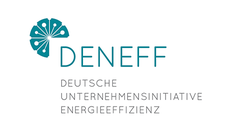Search eceee proceedings
Towards zero-CO2 production and practices in the supply chains for buildings and infrastructure – first experiences from a Swedish case study
Panel: 2. Sustainable production towards a circular economy
This is a peer-reviewed paper.
Authors:
Johan Rootzén, University of Gothenburg, Sweden
Filip Johnsson, Chalmers University of Tachnology, Sweden
Abstract
This paper reports from initial case study work, with the aim to analyse transformative roadmaps for the supply chains for buildings and transportation infrastructure. The work is part of the Mistra Carbon Exit research programme, which addresses and identifies the technical, economic and political challenges for Sweden to reach the target of net zero greenhouse-gas emissions by 2045. The case study work gathers some 30 stakeholders, along the supply chain from building materials to end products in the form of buildings and infrastructure. The work is structured as a participatory integrated assessment and this paper provides an analysis based on the first stages of the assessment process. The aim of the first participatory workshop and case study meetings was to capture a wide range of perspectives with regards means available to tackle the challenge of radically reducing the climate impact from the building and infrastructure sector. This includes exploring:
1. Measures/tools to realise the potential of a 50% reduction in the climate impacts from building and infrastructure construction processes that have been shown to exist already today, and,
2. Measures/tools to accelerate the transition towards zero-emission production and practices in the supply chains from raw materials to completed buildings and infrastructure.
The outcomes from the first stages of the case study work show the importance of:
• Increasing coordination and collaboration along the supply chains, so as to facilitate collective action among stakeholders in the supply chain from basic materials to buildings and infrastructure. This will include developing a common understanding, language and framework among the stakeholders.
• Public actors taking the lead in the transformation, for example by means of innovative procurement practices.
• Establishing markets for zero-CO2 products and services, both for tapping the potential for early mitigation and for developing and deploying transformative shifts in production and practices, including: i) financing and de-risking investment in transformative technologies, ii) pricing emissions and de-meriting use/production of CO2-intensive products, and iii) incentivizing demand reduction and substitution of materials.
Downloads
Download this presentation as pdf: 2-082-18_Rootzen_pres.pdf















